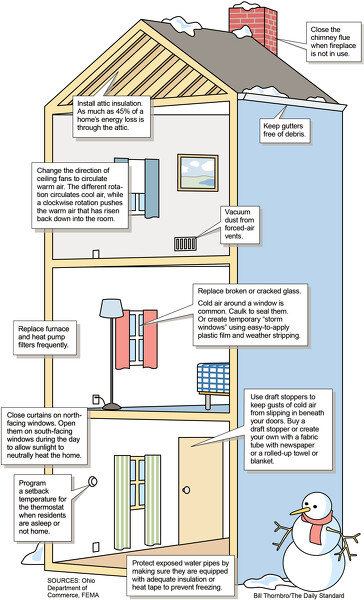
Mercer Health Hospital in Coldwater.
COLDWATER - Health care systems across the country face a litany of challenges this year, including persistent workforce shortages, supply chain ruptures and high levels of inflation, according to the American Hospital Association.
Mercer Health Chief Financial Officer Jon Dingledine at Wednesday night's hospital board of governors meeting highlighted findings from AHA's 2025 Environmental Scan report, a comprehensive look at key data and insights shaping the health care landscape.
From 2018 to 2022, the number of hospitals in the U.S. shrank from 6,146 to 6,120 and the number of community hospitals dropped from 5,198 to 5,129, Dingledine pointed out.
"We've seen that most recently here in our region with the closing of Hicksville (Community Memorial Hospital)," Dingledine said about the now defunct hospital in Defiance County. "So certainly our region is not immune to some of the issues that are being faced by hospitals."
Inflation growth has more than doubled the growth in Medicare inpatient reimbursement from 2021-2023. Moreover, hospitals received payment of 82 cents for every dollar spent caring for Medicare patients in 2022, Dingledine noted.
"For 2030, the population that's going to be now Medicare-eligible really balloons to a much greater percentage, which will cause reimbursement and financial pressures for hospitals, even more so than what we're facing today," he said.
On the issue of drugs, not only are they very costly but they are also difficult to come by.
In the first quarter of 2024, drug shortages reached an all-time high. The second quarter of that same year marked the sixth straight quarter with at least 300 drugs on shortage.
"If we are buying a drug for a hundred dollars for a Medicare patient, we're not getting reimbursed for what we're paying to acquire that drug," Dingledine said. "We have requirements to treat patients regardless of their insurance status or their ability to pay. … Again, this is a huge problem that is much greater than just us here at Mercer Health."
Moving on to the area of workforce, long-standing challenges include burnout, administrative burdens caused by regulatory requirements and workforce shortages.
"Quite frankly, it's harder and harder to recruit, and there's less and less people out there with the certain specialty or degree or education or training that we need to provide health care services," Dingledine said. "Traditional methods of investment in workforce are going to have to continue to progress. That includes developing your staff, changing recruitment habits, and retention practices as well."
Other findings from the 2025 Environmental Scan include,
• From the first quarter of 2019 to the first quarter of 2024, hospital volumes increased by nearly 2% and patient acuity increased by 3%. However, risk of mortality is 22% lower for hospitalized patients.
• AI and emerging innovations in disinfection practices will become more prevalent. Examples include the use of AI in guiding health equity solutions and helping clinicians synthesize evidence-based medicine. The role of telehealth will continue to be important as the field engages patients in their homes. Innovations, such as dry hydrogen peroxide disinfection technology, have the potential to improve infection prevention.
• The field needs to continue to embrace the innovation mindset that was required during the pandemic to be able to meet patients' needs.
• Additional resources are needed for quality improvement support to continue to innovate, implement interventions, and collect and analyze data.
• Thirty-five percent of counties are considered maternity care deserts, defined as counties without a hospital or birth center offering obstetric care and without any obstetric providers. More than 2.3 million reproductive-aged women live in maternity care deserts. Living in a maternity care desert is associated with a 13% increased risk of preterm birth.


